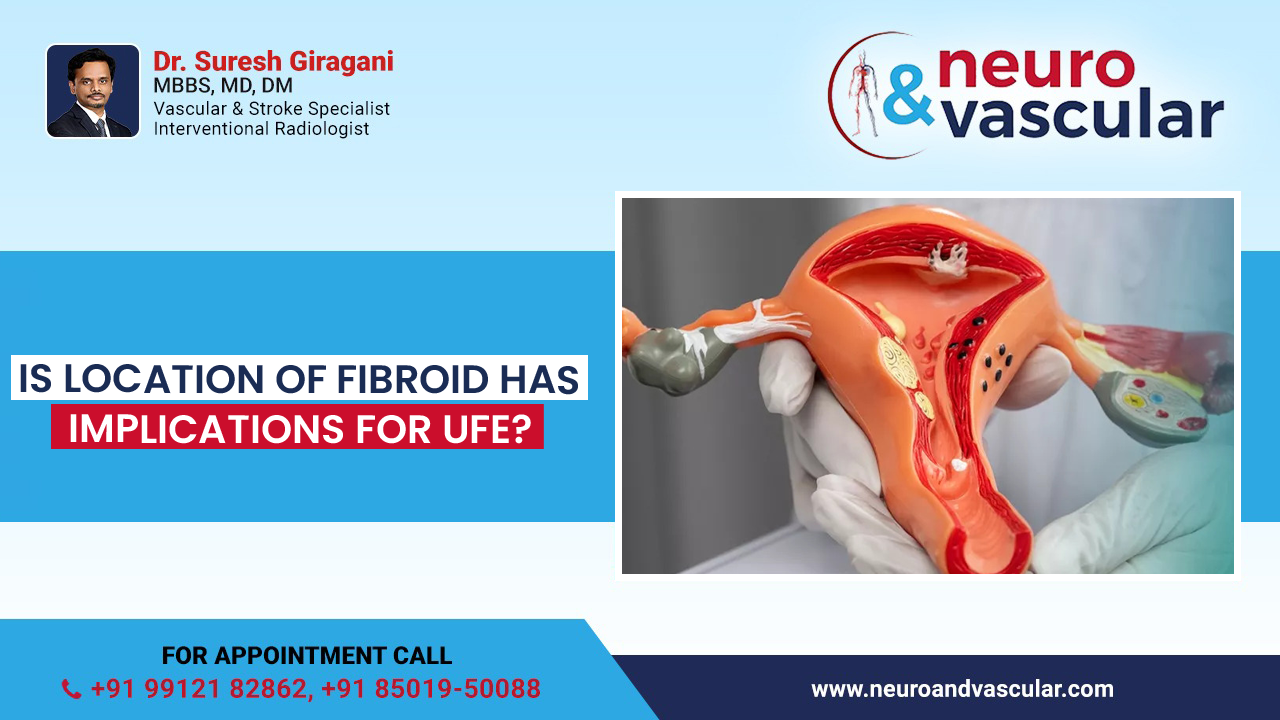
Is location of fibroid has implications for UFE?
Uterine fibroids affect millions of women worldwide, causing a myriad of symptoms that can significantly impact quality of life. Among the treatment options available, Uterine Fibroid Embolization (UFE) stands out as a minimally invasive procedure offering symptom relief and preservation of the uterus. However, the success of UFE is not solely dependent on the procedure itself but also on various factors, including the location of the fibroids within the uterus. In this comprehensive exploration, we delve into the intricate relationship between fibroid location and the implications it holds for UFE.
Understanding Fibroid Location:
Fibroids, also known as leiomyomas, can develop in different regions of the uterus, leading to diverse symptomatology and treatment challenges. The three primary locations of fibroids include subserosal (located on the outer surface), intramural (within the muscular wall), and submucosal (beneath the inner lining of the uterus). Each location presents unique characteristics that influence symptom manifestation and treatment outcomes.
Implications for UFE:
When considering UFE as a treatment option for uterine fibroids, the location of the fibroids becomes crucial. While UFE is generally effective for treating a wide range of fibroid types and sizes, certain factors related to fibroid location may affect the procedure’s success rate and outcomes.
- Submucosal Fibroids: Submucosal fibroids, which grow inside the uterine cavity, may present challenges during Uterine Fibroid Embolization(UFE). Since these fibroids are closer to the endometrial lining, there’s more sloughing off of the fibroid tissue post-embolization. Additionally, submucosal fibroids can cause significant menstrual bleeding as the initial presenting symptom , and patients may experience significant improvement of symptoms after embolization.
- Intramural Fibroids: Intramural fibroids, which develop within the muscular wall of the uterus, are the most common type of fibroids. The location of intramural fibroids can impact the procedure’s technical aspects, such as identifying the appropriate blood vessels to embolize. Large intramural fibroids may also require additional embolic agents to ensure complete fibroid devascularization.
- Subserosal Fibroids: Subserosal fibroids, located on the outer surface of the uterus, typically respond well to UFE. Since these fibroids do not protrude into the uterine cavity, the risk of complications such as post-embolization necrosis is lower. Patients with subserosal fibroids may experience relief from symptoms such as pelvic pain and pressure following UFE. Pedunculate sub serosal fibroids are not good candidates for UFE.
When it comes to fibroid treatment, one size does not fit all. The success of UFE hinges on a personalized approach that considers the unique characteristics of each patient’s fibroids, as well as their symptoms, reproductive goals, and overall health. A thorough evaluation by a skilled interventional radiologist is crucial in determining the most suitable treatment strategy. This may involve imaging studies such as ultrasound or MRI to assess fibroid location, size, and vascularity, providing valuable insights for treatment planning.
The location of fibroids within the uterus holds profound implications for the planning and execution of UFE procedures. Interventional radiologist must consider several factors:
- Pre-procedural Imaging: Comprehensive imaging assessments, including MRI or ultrasound, are indispensable for characterizing fibroid location, size, and vascularity. This information guides treatment decisions and ensures optimal patient selection for UFE.
- Patient Counseling: Educating patients about the potential impact of fibroid location on UFE outcomes fosters informed decision-making and realistic expectations. Discussions should encompass the anticipated symptom relief, transient exacerbation, and post-procedural monitoring protocols.
- Procedural Adaptation: Tailoring embolization techniques to accommodate fibroid location optimizes procedural success and minimizes complications. From vessel selection to embolic agent deployment, precision and adaptability are paramount.
Conclusion:
The location of fibroids within the uterus can have implications for the success and outcomes of Uterine Fibroid Embolization. While UFE remains a safe and effective treatment option for most fibroid cases, factors such as fibroid location should be carefully considered during patient evaluation and treatment planning. By understanding the relationship between fibroid location and UFE, Dr.Suresh Giragani can optimize treatment strategies to achieve the best possible outcomes for patients with uterine fibroids.
About the Author:

Name: DR . SURESH GIRAGANI
INTERVENTIONAL RADIOLOGIST
DR. SURESH GIRAGANI CONSULTANT INTERVENTIONAL RADIOLOGIST at Apollo hospitals Jubilee Hills has more than sixteen years of clinical experience in vascular interventions with a special interest in neurovascular and peripheral vascular disease interventional procedures.